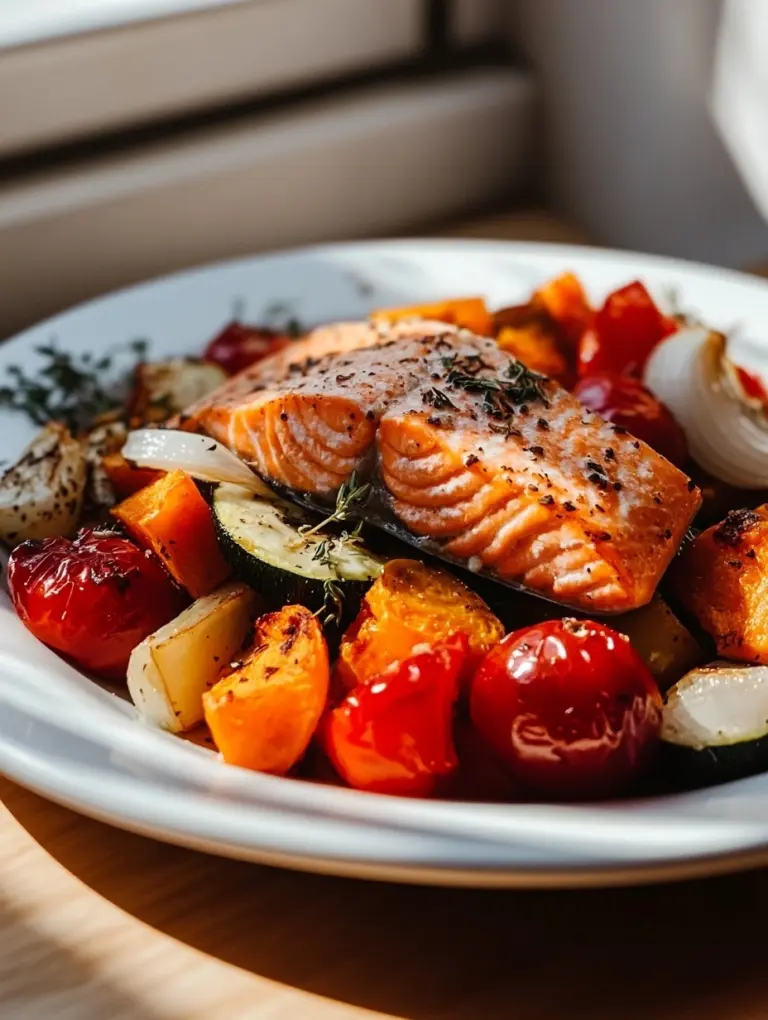Achy Joints and Menopause: Relief Tips and Treatment Options
Achy joints during menopause are a common issue many women…
Achy joints during menopause are a common issue many women face. This discomfort happens because decreasing estrogen levels can affect your joint health. In this article, we’ll explore the reasons behind achy joints and other menopause symptoms and provide tips for relief and treatment options.
Key Takeaways
- Menopausal joint pain, often resulting from declining estrogen levels, can manifest as stiffness, aching, and swelling, complicating overall health during the menopausal transition.
- Key factors contributing to menopausal joint pain include hormonal fluctuations, aging, and weight gain, all of which require proactive management to reduce discomfort and maintain joint health.
- Strategies to alleviate joint pain during menopause include regular exercise, an anti-inflammatory diet, weight management, and potential treatments like hormone therapy and supplements, with professional consultation recommended for persistent pain.
Understanding Achy Joints and Menopause

Joint discomfort during menopause, known as menopausal arthralgia, may stem from a variety of sources including hormonal shifts, physical activities, and lifestyle habits. The reduction of estrogen levels throughout the menopausal transition can lead to joint pain and stiffness in numerous women at any point during this phase. The menopause joint pain feel can vary, often described as dull aches, stiffness, and occasional shooting pains, which can significantly affect daily activities and overall quality of life. This sensation associated with menopause joint pain is frequently accompanied by additional symptoms like hot flashes and disrupted sleep patterns which exacerbate the difficulty in coping experience joint pain.
Acknowledgement of the impact that hormonal fluctuations have on bone well-being and joint ache is crucial for effectively handling these issues. With lower estrogen production around menopause comes a decline in collagen synthesis, undermining the connective tissue of tissues such as cartilage, ligaments, and tendons. Such diminution contributes to increased instances of pain and rigidity within joints—highlighting the importance of confronting these changes head-on to maintain optimal joint health amid menopausal progression.
The Role of Estrogen in Joint Health
Estrogen is critical for preserving bone and cartilage health, which are fundamental components of joint health. Its role includes maintaining the integrity of joint tissues and cartilage, facilitating proper function, and diminishing discomfort in joints. A considerable decrease in estrogen levels during menopause can lead to escalated inflammation within the joints due to tissue damage, amplifying pain. Consequently, it becomes imperative to identify strategies that bolster joint health amid these changes.
With menopause comes a drop in estrogen that can spur an increase in bodily inflammation—this spike contributes substantially to both stiffness and pain within the joints. Estrogen’s anti-inflammatory effects normally serve as a shield for our joints. Its decline means losing this protection, which may result in an increased risk of inflammation and subsequent anguish. Recognizing these transformations empowers individuals with information needed for taking active steps aimed at curtailing joint pain while promoting overall joint well-being.
Common Symptoms of Menopausal Joint Pain
Joint pain during menopause can present itself in multiple ways, comprising stiffness, soreness, swelling, and unrelenting discomfort. This condition can impact a women’s health across range of joints including the neck, shoulders, elbows, hands, knees and hips. In certain cases, women may also detect sensitivity upon contact with these areas, which suggests inflammation or heightened tenderness at the impacted sites.
Additional prevalent symptoms consist of auditory cracking or popping noises when moving about as well as morning rigidity and a diminished capacity to move freely. Such issues pose challenges in completing everyday tasks without unease. Some individuals note that their joint pain intensifies under cold or moist climatic conditions.
Recognizing these signs is crucial for pursuing proper care to improve one’s daily living standards.
Factors Contributing to Menopause Related Joint Pain During
Numerous elements play a role in joint pain associated with menopause, such as hormonal fluctuations, the natural aging process, and an increase in body weight. The decline of estrogen during this period can result in heightened inflammation that aggravates friction within joints and intensifies pain. Getting older increases the probability of developing degenerative conditions affecting the joints, which may elevate levels of discomfort.
Gaining extra pounds throughout menopause significantly affects joint health due to additional pressure on load-bearing joints like knees and hips. This increased burden can amplify existing pain and unease. It’s crucial to tackle these issues for alleviating joint-related symptoms and fostering better overall health of one’s joints during menopause.
Hormonal Fluctuations
During menopause, varying levels of estrogen can cause elevated inflammation in the body. Such increased inflammation is often associated with joint pain and stiffness, which are notable contributors to menopausal joint pain. As estrogen diminishes, it leads to greater friction in the joints that amplifies discomfort and impairs joint health.
Managing hormonal variations is key for diminishing inflammation and alleviating joint pain. Since consuming high amounts of sugar has been linked to heightened inflammatory responses—potentially aggravating join pain—it’s beneficial to embrace a healthy diet low in refined sugars as a strategy for reducing these impacts.
Understanding how shifts in hormones influence muscle mass joint health is crucial for effectively addressing symptoms related to menopause.
Aging and Joint Health

As women reach menopause, the likelihood of experiencing joint pain escalates due to an increased susceptibility to degenerative conditions within the joints. Factors such as aging, genetic predispositions, and shifts in hormone levels can intensify these issues, resulting in osteoarthritis—a prevalent ailment among this group—marked by augmented deterioration leading to discomfort and rigidity.
During menopause, there’s a heightened risk for developing osteoporosis, which undermines bone strength and amplifies joint-related afflictions. The widespread impact of menopausal arthralgia across numerous joints calls for effective approaches aimed at preserving bone density and joint health while also alleviating associated pains.
Weight Gain and Joint Stress
During menopause, it is typical for women to experience weight gain due to shifts in hormones and changes in lifestyle. This increase in weight puts additional pressure on the joints that bear weight, such as the hips and knees, which can lead to heightened pain and discomfort. Consequently, tasks involving bearing extra weight may become more difficult and could escalate joint pain.
It is essential for individuals to manage their body weight effectively in order to minimize stress on joints and ward off associated pain. Following a well-rounded diet complemented by consistent exercise helps relieve pressure on joints while improving overall joint health.
Understanding the correlation between weight gain and its impact on joint pain enables people to take deliberate measures aimed at mitigating unease and fostering physical wellness.
Conditions That May Mimic Menopausal Joint Pain
During menopause, discerning joint pain from other possible issues becomes more complex when existing conditions that affect joints obscure the symptoms associated with joint pains along with menopause. If enduring joint pain is accompanied by additional signs such as fever or tiredness, it could signal a severe health issue. To exclude serious conditions linked to joint pain, one should seek advice from a healthcare professional.
Recognizing and treating these afflictions appropriately depends on grasping their nature. Conditions of autoimmune disease like rheumatoid arthritis, osteoarthritis, and fibromyalgia might resemble the joint discomfort experienced during menopause. Distinguishing among them is essential for proper treatment plans.
Osteoarthritis
Women who have gone through menopause face a considerably increased chance of developing osteoarthritis which weakens bones. Research indicates that women between the ages of 50 and 60 may be up to 3.5 times more likely to get it than men are. This heightened risk is partly due to diminishing estrogen levels during menopause, which can compromise joint health by impacting cartilage, and other contributing factors like genetic predisposition and natural aging.
As individuals age, their susceptibility to degenerative joint conditions, including osteoarthritis, tends to rise. It’s vital for effective treatment and care that one can identify the symptoms of osteoarthritis properly and differentiate them from pain associated specifically with joint issues arising during the postmenopausal phase.
Rheumatoid Arthritis
Rheumatoid arthritis manifests as a persistent inflammatory condition resulting from an autoimmune reaction. While it commonly develops in individuals aged 25 to 45, its onset can coincide with menopause, complicating the diagnostic process. Nevertheless, rheumatoid arthritis is not initiated by menopausal changes.
Recognizing the symptoms and understanding the distinct characteristics of rheumatoid arthritis are crucial for distinguishing it from joint pain associated with menopause. Seeking guidance from a healthcare provider is vital to secure a precise diagnosis and obtain suitable management options for this ailment.
Fibromyalgia
Fibromyalgia is a long-standing disorder recognized by pervasive pain throughout the musculoskeletal system. This condition tends to be more prevalent in individuals who were assigned female at birth and may intensify during menopause, which can make diagnosis challenging because of its common symptom similarity with joint pain associated with menopause.
Confusion in diagnosing may arise from the symptomatic similarities shared by fibromyalgia and menopausal joint pain. Accurate identification of fibromyalgia followed by expert consultation is crucial for effectively treating the condition and reducing pain.
Strategies to Alleviate Menopausal Joint Pain

To alleviate joint pain during menopause, it’s essential to adopt a multifaceted approach that includes both lifestyle modifications and various treatment alternatives. Embracing regular exercise, adhering to a nutritious diet, and employing techniques for managing stress can greatly assist in mitigating the discomfort associated with menopause related joint pain. Options such as over-the-counter analgesics, hormone therapy, and dietary supplements might offer additional relief.
Outlined below are diverse tactics aimed at reducing menopausal joint pain. These practical suggestions are designed to foster improved joint health throughout this transitional phase of life.
Regular Exercise
Engaging in routine physical activity can mitigate the discomfort associated with joint pain during menopause, while also enhancing general joint health. This is achieved by maintaining muscular strength, managing inflammation and soreness, as well as promoting better lubrication of joints. For women encountering menopausal joint pain, it’s advisable to partake in gentle forms of exercise like yoga, walking or swimming.
Incorporating weight-bearing exercises that gradually intensify can aid in strengthening the joints. Yoga offers additional benefits due to its capacity to increase flexibility and promote relaxation for those suffering from joint discomfort. Nevertheless, caution should be exercised so as not to overdo these activities since excessive strain may stress the joints further.
Anti-inflammatory Diet
Eating a well-balanced diet that includes anti-inflammatory foods can help reduce joint pain during menopause. Here are some foods to include in an anti-inflammatory diet:
| Food Category | Good | Bad |
|---|---|---|
| Fruits | ✔️ | |
| Vegetables | ✔️ | |
| Whole grains | ✔️ | |
| Fish | ✔️ | |
| Lean meats | ✔️ | |
| Healthy fats | ✔️ | |
| Nuts | ✔️ | |
| Leafy greens | ✔️ | |
| Olive oil | ✔️ | |
| Oily fish | ✔️ | |
| Refined carbs | ❌ | |
| Fried foods | ❌ | |
| Soda | ❌ | |
| Red meats | ❌ | |
| Margarine | ❌ | |
| Shortenings | ❌ |
Incorporating more anti-inflammatory foods into our diet can help decrease inflammation and support joint health.
Stress Management Techniques
It’s essential to control stress since it can intensify the joint pain associated with menopause. Employing mindfulness practices like meditation, deep breathing, and gentle physical activity can be potent in diminishing stress and lessening pain.
By consistently engaging in these methods for managing stress, one can decrease the incidence of joint pain and enhance their general health status. Successful management of stress has a substantial effect on improving our life quality throughout menopause.
Maintaining a Healthy Weight
Carrying excess weight can intensify the strain on joints, especially when engaging in physical activity. Managing one’s body weight is beneficial for easing musculoskeletal pain and lessening joint stress. By shedding pounds, individuals can potentially cut down knee arthritis progression by half, highlighting the clinical research on the significance of proper weight control.
For those going through menopause looking to shed extra pounds, it is recommended to follow a Mediterranean diet as it offers a well-rounded and nutritious method for sustaining an optimal body weight. Embracing a balanced diet paired with consistent exercise plays a crucial role in promoting joint health and diminishing pain levels.
Quit Smoking
Smoking has been found to exacerbate symptoms of menopause and elevate the likelihood of experiencing joint pain. By giving up smoking, one can greatly enhance their joint health and alleviate discomfort. Fortunately, many negative impacts associated with smoking are reversible, and there is a wealth of assistance accessible for those looking to stop smoking.
Enlisting the aid of a healthcare provider can offer extra support as well as additional resources that may be beneficial in this endeavor.
Over-the-Counter Pain Relief
Using over-the-counter medications can offer short-term respite from the discomfort of joint pain. Techniques such as employing a heating pad, utilizing a hot water bottle, applying warm compresses or taking a warm bath can all contribute to mitigating the pain in joints.
Conversely, employing an ice pack can be beneficial in reducing inflammation within the joints. Both cold and heat treatments are efficient approaches for diminishing joint pain, assisting individuals with managing their discomfort and enhancing overall daily well-being.
Heat and Cold Therapy
Applying heat is a useful technique for alleviating pain in the joints, enhancing blood flow, and can aid in easing stiffness as well as relaxing muscles. Alternatively, cold therapy serves to diminish swelling and provide numbness to areas experiencing discomfort.
By integrating these methods into daily practices, one can markedly decrease inflammation and ease pain in the joints, contributing to an overall improvement of joint pain issues.
Menopausal Hormone Therapy (MHT) / Hormone replacement therapy (HRT)

Hormone replacement therapy (HRT), often referred to as menopausal hormone therapy (MHT), utilizes estrogen-based medications. These medications serve to counter the decline in natural estrogen that occurs during the menopause transition. MHT is designed specifically to mitigate joint pain by combating decreased estrogen levels and thus can be effective both throughout perimenopause and following menopause. The aim of such hormone therapy is not only relief from discomfort but also an improvement in overall joint health through restoration of hormonal balance.
Those who are diagnosed with entering the phase of menopause before reaching 45 years old are usually advised to commence HRT promptly, regardless of whether they currently have symptoms or not. To navigate these options effectively, seeking counsel from a healthcare provider will help tailor appropriate treatment strategies for managing any associated discomforts, including those affecting joints.
Menopausal hormone therapy has been recognized for its ability to manage discomfort attributed to declining hormones during this life stage. Thereby enhancing one’s comfort and quality of life significantly when dealing with the pains commonly associated with this transition period.
Supplements for Joint Health
Certain supplements, such as fish oil, collagen hydrolysate, and curcumin, might play a significant role in mitigating joint pain and can improve joint pain, particularly during menopause. Supplements containing collagen and glucosamine could be instrumental in enhancing joint function and diminishing discomfort, particularly beneficial during the menopausal period when managing joint pain is critical. Incorporation of these nutritional aids into one’s diet can bolster joint health while providing relief from distress.
Adopting these dietary additions has the potential to fortify joints, curb inflammation, and foster improved overall health of our joints. It remains crucial to seek counsel from a healthcare provider before embarking on any new supplement regimen to confirm its suitability for your unique health requirements.
When to Consult a Healthcare Provider

Should joint pain become intense or linger, reaching out to your healthcare provider is critical. It’s important to engage in conversation with a health professional if the discomfort hampers everyday activities. If persistent joint pain comes with symptoms like fever or tiredness, this requires medical evaluation. Any abrupt alterations in how a painful joint looks—such as it becoming swollen or warm—should trigger an immediate visit to the doctor.
It’s imperative that you seek advice from a healthcare provider should home remedies fail to ease your joint pain for proper assessment. Discussing heightened joint pain during menopause with your healthcare provider can aid in pinpointing its root and securing efficient treatment options. Pursuing expert guidance guarantees that we obtain appropriate assistance and maintain our joint health optimally.
The Importance or Maintaining Joint Health During Menopause
In closing, it is important to reiterate the important for menopausal women to maintain joint health prior to and through the menopause. It is crucial to ensure the probability of joint pain is reduced and severe pain associated with musculoskeletal symptoms kept at bay. As estrogen declines, estrogen deficiency can lead to conditions that weaken bones and exacerbate muscle loss, impacting muscle strength and causing many to experience pain. Common signs include popping sounds in joints, which may be more prevalent among postmenopausal women. To combat these issues, adopting a holistic approach that includes integrative medicine can be beneficial. This involves losing weight through a balanced lifestyle, incorporating anti-inflammatory properties in your diet, and considering collagen supplementation to support joint health. Family medicine practitioners often recommend strategies to reduce inflammation and promote midlife health, ensuring that menopausal women can manage their symptoms effectively and maintain joint health. This could help prevent joint pain.
Summary
During the transition into menopause, managing joint pain becomes a significant concern. It’s essential to grasp how hormonal shifts, aging and weight gain interplay with joint health to effectively handle these discomforts. Adopting lifestyle adjustments like engaging in consistent physical activity, adhering to a nutritious diet, and employing strategies for stress reduction can greatly mitigate the effects of various menopausal symptoms and ultimately reduce pain. Investigating various treatment methods such as Menopausal Hormone Therapy (MHT) and dietary supplements is beneficial. For optimal care and reinforcement during this critical time period, always consider getting advice from healthcare professionals so as to preserve our wellbeing.
Frequently Asked Questions
What are the common symptoms of menopausal joint pain?
Joint pain during menopause typically presents as persistent aches, stiffness, swelling and tenderness which can lead to a decreased range of motion.
One might notice cracking or popping noises along with stiffness when waking up in the morning.
How do hormonal fluctuations during menopause affect joint pain?
During menopause, as estrogen levels fall, there is a corresponding rise in inflammation that can aggravate joint pain and stiffness.
It’s crucial to tackle these hormonal shifts in order to control this discomfort successfully.
What lifestyle changes can help alleviate menopausal joint pain?
Incorporating regular exercise, adopting an anti-inflammatory diet, managing stress, maintaining a healthy weight, and quitting smoking can effectively alleviate menopausal joint pain.
These lifestyle changes are vital for improving overall joint health during this phase.
When should I consult a healthcare provider about my joint pain?
You should consult a healthcare provider about your joint pain if it is severe or persistent, limits your daily activities, or is accompanied by symptoms such other factors as fever or fatigue.
Timely medical advice can help address potential underlying issues.
Can menopausal hormone therapy (MHT) help with joint pain?
Hormone therapy, specifically menopausal hormone therapy (MHT), has the potential to relieve joint pain that arises as estrogen levels fall during menopause. This is achieved through reinstating hormonal equilibrium and diminishing inflammation.
As a result, MHT could be considered a viable solution for individuals dealing with this type of chronic pain here.






